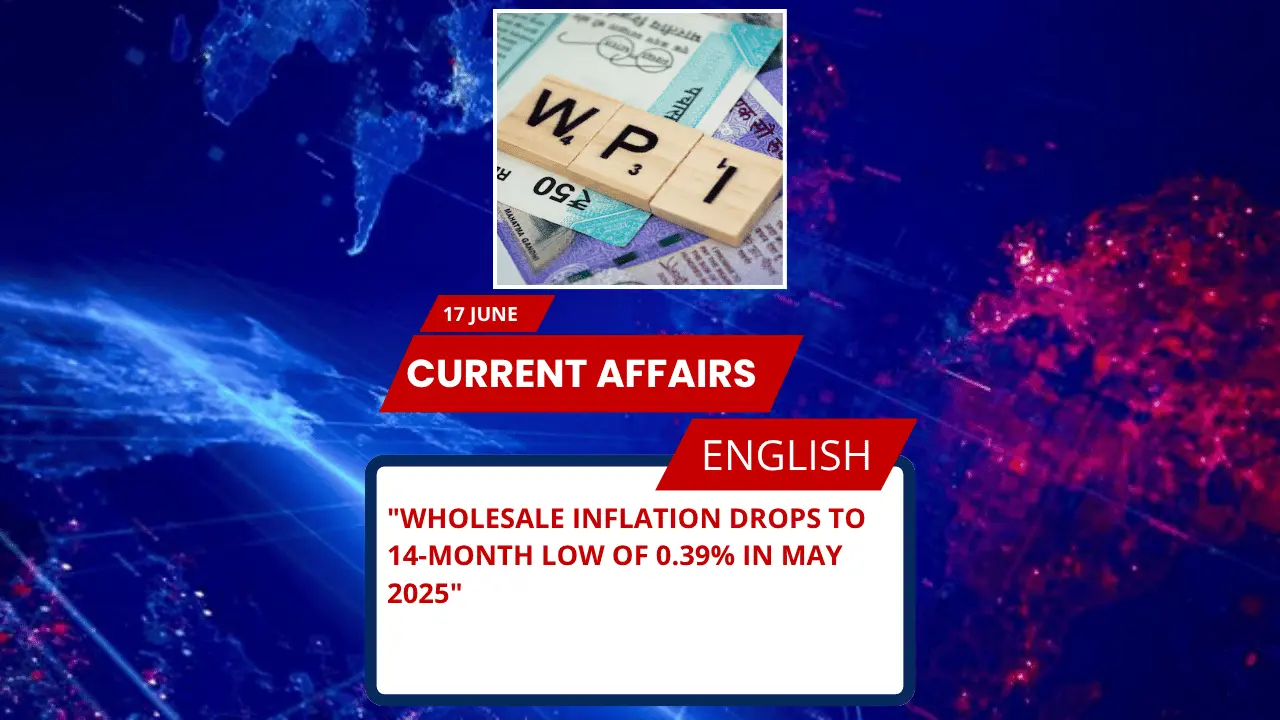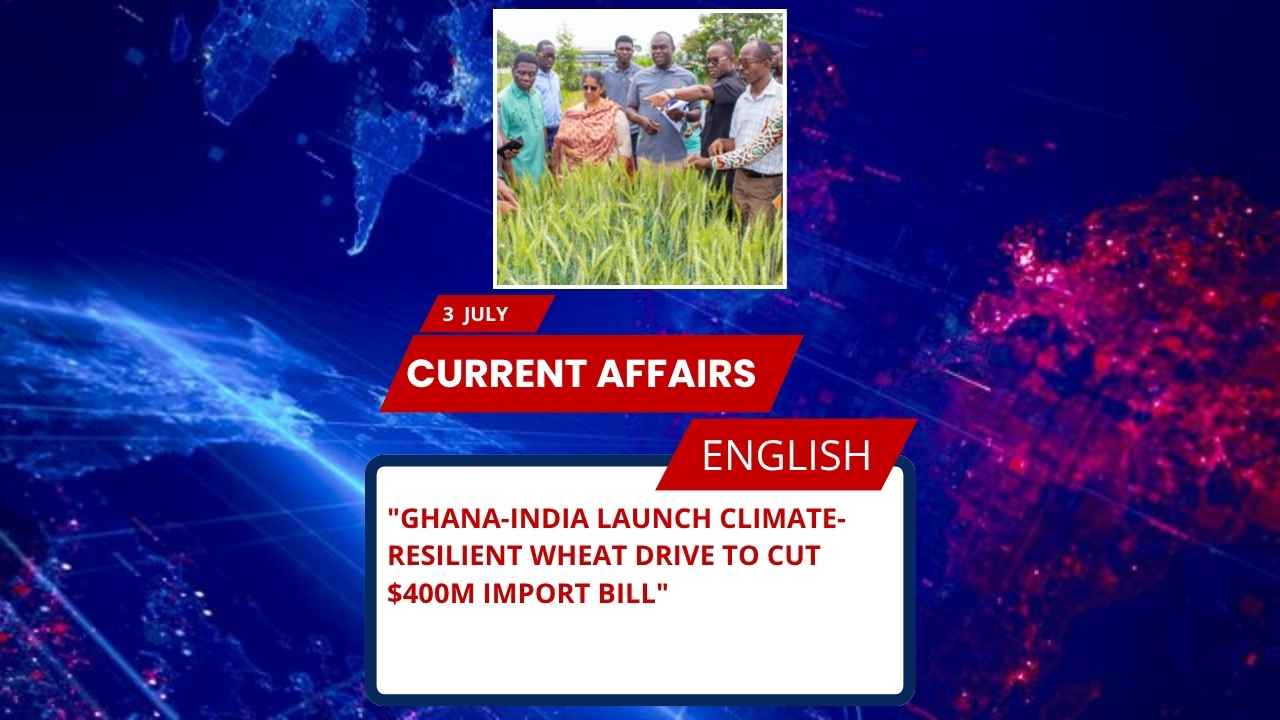
Key Points for SSC, UPSC, and Other Government Exams
- India’s wholesale inflation fell to 0.39% in May 2025, a 14-month low.
- WPI (Wholesale Price Index) measures factory gate prices before retail.
- May inflation was down from 0.85% in April 2025.
- The decline is attributed to lower prices of minerals, mineral oils, non-food articles.
- Prices of food articles, coal, electricity increased in May 2025.
- WPI base year = 2011-12
- Released by Ministry of Commerce and Industry.
- WPI groups: Primary articles, Fuel & Power, Manufactured Products
- 10 out of 22 NIC groups saw price rise; 9 groups saw price fall.
Complete Details: May 2025 WPI Data Explained
What is WPI?
The Wholesale Price Index (WPI) tracks changes in prices of goods at the wholesale level—before they reach retail markets. This is different from CPI (Consumer Price Index), which tracks prices paid by end consumers.
May 2025 Highlights
- WPI inflation stood at 0.39%, the lowest in 14 months.
- April 2025 WPI inflation was 0.85%.
- Decline in prices:
- Minerals: -7.16%
- Mineral oils: -2.06%
- Non-food articles: -0.63%
- Increase in prices:
- Food articles: +0.56%
- Coal: +0.81%
- Electricity: +0.80%
WPI Structure
The WPI groups commodities under:
- Primary Articles (food and non-food)
- Fuel and Power
- Manufactured Products
Among 22 NIC (National Industrial Classification) groups for manufactured products:
- 10 groups had price rise: e.g. other manufacturing, non-metallic minerals, pharmaceuticals, textiles
- 9 groups had price fall: e.g. food products, basic metals, chemicals, plastics
- 3 groups showed no change
Base Year and Release
- Base Year: 2011-12
- Released by: Ministry of Commerce and Industry, Government of India
About Ministry of Commerce and Industry
- Formed: 1947
- Key Departments: Department of Commerce, Department for Promotion of Industry and Internal Trade
- Key Role: Regulates trade, industry, commerce, and WPI publication
- Current Minister (as of 2025): Piyush Goyal
MCQs Based on May 2025 WPI Data
1. What was India’s WPI-based inflation rate in May 2025?
A) 0.85%
B) 0.39%
C) 1.2%
D) 1.5%
Answer: B) 0.39%
2. Which organisation releases WPI data in India?
A) Ministry of Statistics and Programme Implementation
B) Ministry of Finance
C) Ministry of Commerce and Industry
D) NITI Aayog
Answer: C) Ministry of Commerce and Industry
3. What is the base year for the current WPI series?
A) 2004-05
B) 2011-12
C) 2015-16
D) 2019-20
Answer: B) 2011-12
4. Which of the following saw a decline in prices in May 2025?
A) Food articles
B) Coal
C) Non-food articles
D) Electricity
Answer: C) Non-food articles
UPSC-Style FAQs with Detailed Answers
Q1. Explain the significance of WPI in tracking inflation in India. How does it differ from CPI?
Answer:
WPI (Wholesale Price Index) is crucial for measuring price movements at the wholesale level in the Indian economy. It reflects changes in the prices of goods before they reach the retail stage and thus provides early signals of inflationary trends in production and distribution sectors.
Unlike CPI (Consumer Price Index), which measures price changes from the consumer’s perspective and includes services, WPI focuses only on goods prices at the factory gate level. CPI is more relevant for measuring the cost of living and for monetary policy targeting, whereas WPI is used for monitoring price stability in production sectors and for policy formulations related to industry and trade.
Q2. What factors led to the decline in WPI-based inflation to 0.39% in May 2025?
Answer:
The decline in WPI-based inflation to 0.39% in May 2025 can be attributed to several factors:
- A sharp drop in the prices of minerals (-7.16%).
- A decline in mineral oil prices (-2.06%) owing to global crude oil trends.
- Reduced prices of non-food articles (-0.63%) due to supply improvements and lower demand in certain sectors.
At the same time, minor upward pressures came from the increase in prices of food articles (+0.56%), coal (+0.81%), and electricity (+0.80%).
Q3. How can WPI trends impact economic policy decisions in India?
Answer:
WPI trends directly influence economic policy decisions related to industry, trade, and fiscal management. A low WPI inflation rate like 0.39% indicates easing price pressures at the wholesale level, which could encourage the government and RBI to focus more on growth-stimulating measures rather than inflation control.
WPI trends also guide decisions on subsidies (especially for fuel and power), adjustments in import-export duties, and price controls on essential commodities.
Q4. Discuss how WPI-based inflation affects industrial and manufacturing sectors.
Answer:
WPI-based inflation significantly affects cost structures in industrial and manufacturing sectors. When WPI inflation is low, input costs remain stable, encouraging production expansion and competitive pricing. Conversely, high WPI inflation increases raw material costs, eroding profit margins and affecting capital investment decisions.
In May 2025, the decline in prices of minerals and mineral oils would help reduce input costs for several industries, while rising prices in electricity and coal could marginally increase production costs in energy-intensive sectors.







